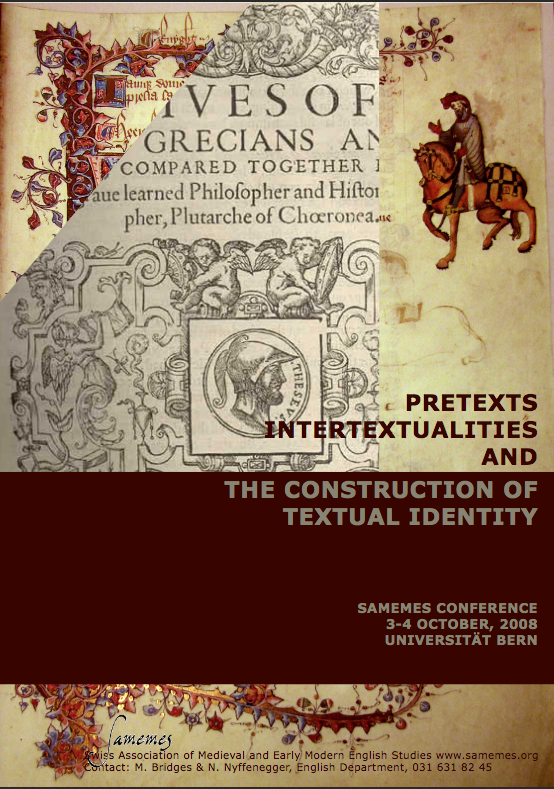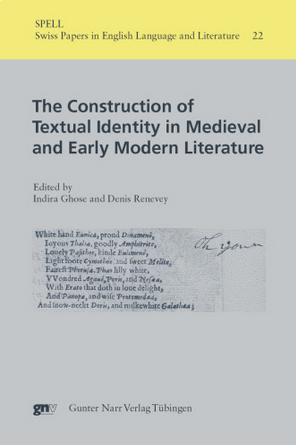Pretexts, Intertextualities, and the Construction of Textual Identity
3–4 October 2008, University of Bern
Convenors: Margaret Bridges and Nicole Nyffenegger
The first SAMEMES conference focused on some of the numerous critical and theoretical interests common to our institutionally divided disciplines, whether they relate to modes of textual production and reception (the advent of print culture does not spell out the demise of manuscript production, nor do these two forms of textuality reflect the wide range of literary transmission and reception, which is further affected by intermediality), to formal or thematic continuities and discontinuities (processses of cultural memory and/or amnesia), or whether they concern the effects of social and political change in (gendered and transgendered) construction of textual identities. Current theoretical approaches to literary history require that the study of diachronic and synchronic relationships between texts - pretexts and intertexts - take into account mechanisms of cultural transmission, as well as of gender and identity construction.
Plenary speakers: Stephen Orgel (Stanford University), Ad Putter (University of Bristol), David Wallace (University of Pennsylvania), Helen Wilcox (University Of Bangor)











